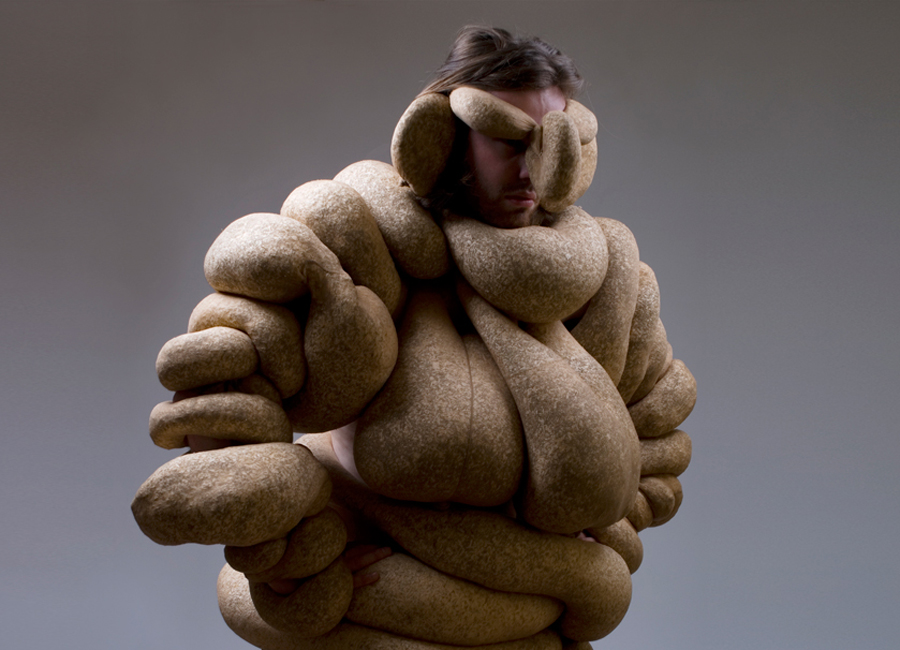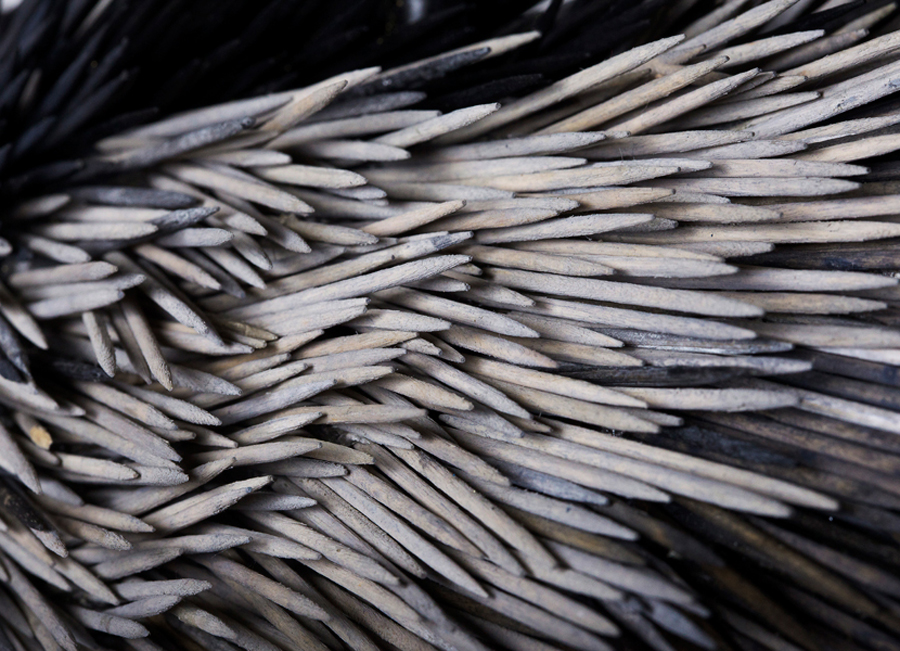Event Horizon: Lucy McRae
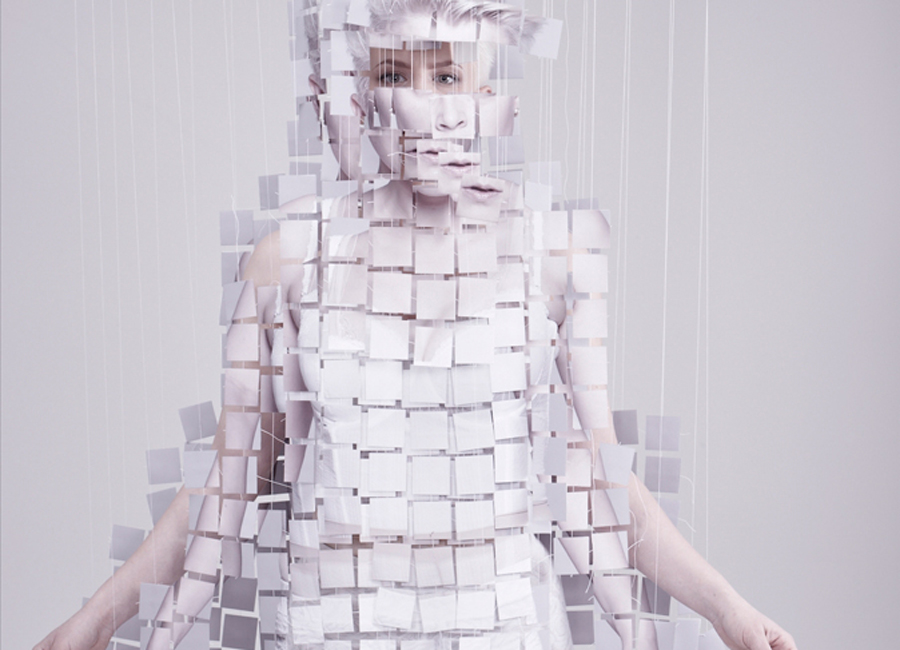
Lucy McRae thrives on inside-outness. A self-described and now world-renowned ‘body architect’, her projects straddle the worlds of design, fashion, art, film, product design and performance – ambiguous, avant-garde forays to the event horizon between near and distant futures. Hers is a fiercely feminine vision in which the body is pushed to its biological edge, the barriers between art and science and the organic and the architectural falling away. To grasp the nimble, cross-pollinated nature of Lucy’s work, it’s worth surveying her lo-fi collaborations with Bart Hess; recent film commissions for Australian companies Aesop and Miss Chu; and intricate, creature-like armoured lamps for Broached Commissions. But the genesis of her discipline-defiance begins in the suburbs of Melbourne.
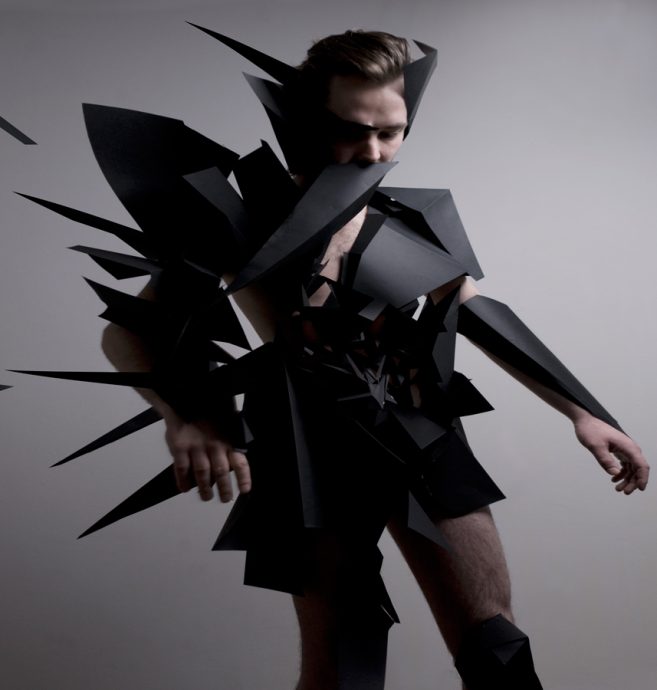
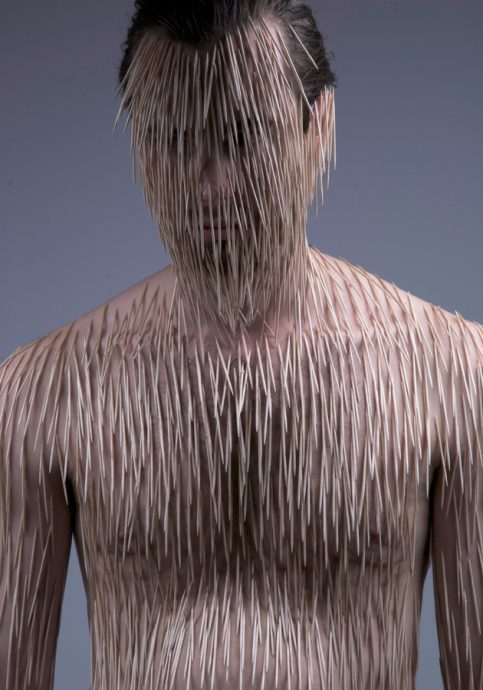
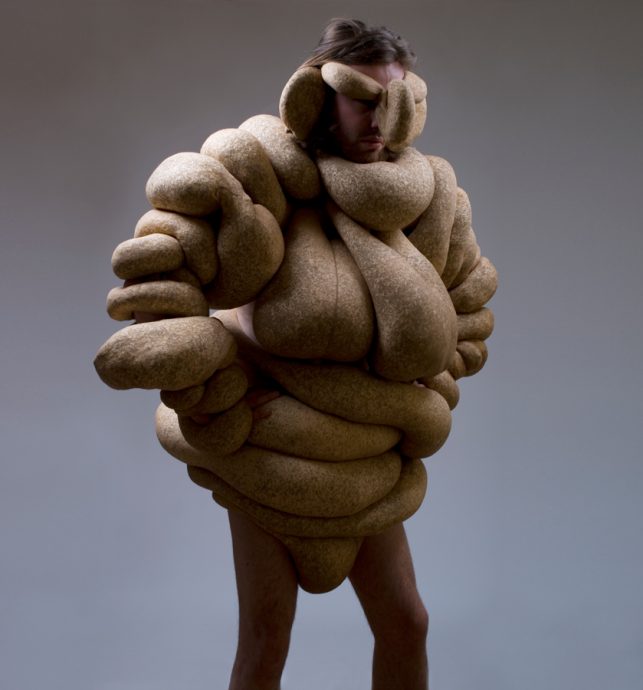

Growing up, Lucy studied classical ballet throughout her childhood and adolescence before shifting focus with a degree in interior design at RMIT. On graduating, she – like so many Australians continue to do – made the antipodean rite of passage with a move to London. Here, she spent five years working across architecture and fashion, an important formative period in which she experimented with design for both the body and its environment – what would later become her signature space. Lucy began freelancing with electronics giant Philips, commuting between London and the company’s HQ in Eindhoven, Netherlands. Recognising her singular vision, the then design director Clive van Heerden suggested Lucy apply for a role with the company in its Probes or ‘future laboratory’ division. Legend has it that in her interview with the Philips HR manager, she was stumped as to how to explain her profession: “I’m a hybrid… a ballerina, I come from an architecture background…dance… fashion”. The HR manager stated that without a clear job description he could not hire her. After a pep talk with her mentor van Heerden, an entirely new job title came into being – body architect. Armed with this unique professional identity, Lucy left her next interview at Philips with a full-time position. During her five years at Philips, collaborating with artists, scientists, engineers and product designers to create sci-fi objects for 15-20 years into the future, she was given free rein to visualise a biotech future, creating and experimenting on ‘future concept products’ that combined biology and technology. Projects included a dress that mimicked changes in emotional states, ‘blushing’ with light; and electronic tattoos that would shift according to touch.


Last year, Lucy was in residence at Pin-Up Project Space in Melbourne, developing Swallowable Parfum, a cosmetic ‘pill’ that works from the inside out, transforming the body into an atomiser as it metabolises the fragrance, transmitting a unique and enhanced individual scent. The product is still speculative – perhaps 10-20 years away from market – but the ‘live lab’ at Pin-Up was a collaborative and stylised performance of a futuristic ‘product launch’, incorporating a ‘film set’ laboratory, salon, artefacts and costuming by Chorus. Eugenia Lim sat down with Lucy McRae to talk time travel, ‘the singularity’ and possible futures.
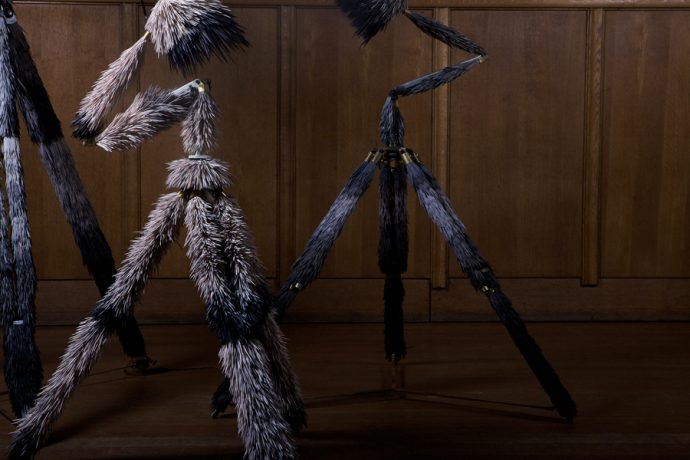
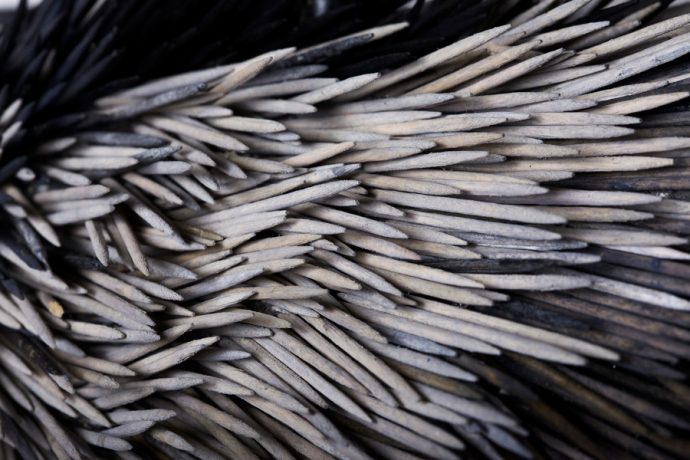
I’m interested in how you time travel – you pitch into the future from the present. How do you work across these different time zones?
Well, I’m naturally inspired by technology and science. I guess a lot of that research is thinking about what ‘might be’ in the future, which ultimately tips me forward into those speculative worlds. I worked at Philips for four years learning future forecasting techniques, creating artistic provocations that physically manifested this research – all pitched 20 years in the future – so I guess this time zone straddling has been active since then.
Chlorophyll Skin from Lucy McRae on Vimeo.
Generally, the future seems to be left to scientists or technological innovators. Where do you see the place for artists in shaping our future? Why is it important for them to be involved as well?
The cross-disciplinary breed have been incubating and operating behind the scenes so to speak; the hybrid approach is proving its rigour with the thirst to propagate innovation. I treat technology as a membrane, as if I’m designing the connective tissue between science and imagination, creating portals of possibility that embody the future. I’m no neuroscientist but it makes sense to assume the choreography of the artist brain performs and outputs differently to the scientist, with imaginative impulse compared with more methodical thinking. Collaborating with contrasting minds broadens and expands possibility.
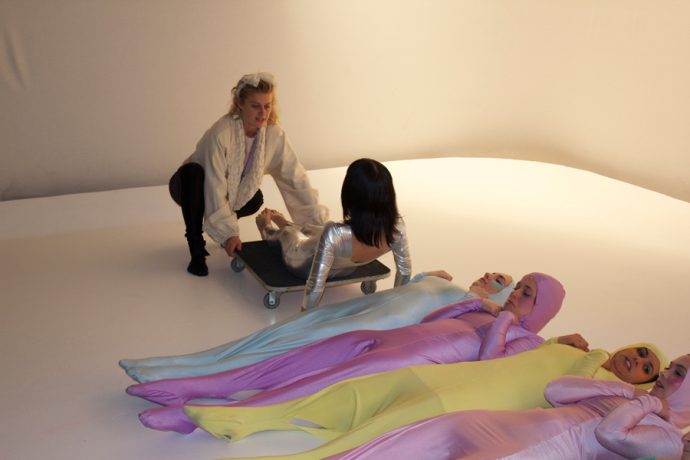


Who inspired the Swallowable Parfum?
The utopian technologist Ray Kurzweil.
The singularity guy?
Actually it was Paul Barbera [photographer and AP contributor] who first introduced me to his theories. Soon after watching Transcendent Man [a documentary about Kurzweil’s life and ideas], I attended a neuro-aesthetics conference in Germany. There was a wonderful man who talked about innovation being birthed in the edges and extremes of culture, that if you venture far enough out – into the remote, uncomfortable situations – that is where magic is born. That really excites me. He said science is a way of understanding who we are as human beings. I treat my work like a barometer, my body and antennae, responding to the world and shifting tectonics around me.
It’s more intuitive.
Totally. It’s primal, like an electromagnetic force – sort of like a dust coming into my mind, which I then respond to in the form of an artwork. It has been said that artists are interpreting science by creating their own series of facts based on the original conditions. I think that’s a really interesting way to place what I am doing.
‘Swallowable Parfum’ by Lucy McRae from NOWNESS on Vimeo.
Your work treads that fine line between conceptual and commercial design. I wanted to know whether you see Swallowable Parfum as something that will be sold over the counter?
Totally. Body odour smell is the excretion of our immune system through our skin. I thought about how could we manipulate the immune system and biologically enhance the odour. Deodorants and perfumes mask our natural scent, moving us further away from our animal origins, filtering primordial communication forms. The Swallowable Parfum looks at how a genetically unique scent could shift social dynamics, finding new ways to seek out sexual partners through scent.
You came up with the term ‘body architect’ to describe yourself. In a world where people like to categorise and to ‘define’, how have you found your journey?
When I was forced to come up with a name to describe my work it created a platform where I can perform any number of tasks, without the expectation of a label. It’s still very ambiguous and open for interpretation and I still stand my ground that you don’t need a title. When people ask me what I do and I reply “I’m a body architect” that is usually followed by “what is that?”
Morphē Short Film for Aēsop from Lucy McRae on Vimeo.
I want to ask you about Australia. You have been working with Australian brands and companies quite a lot lately. Was there a particular draw to bring you back to working with local brands?
I grew up in Australia. I have lived in Europe for thirteen years and visit every year for work. Australia has a relentless enthusiasm; a ‘yes we can’ attitude. Each time I return, I experienced this open mindedness towards art and brands commissioning art. My first Australian collaboration was with Dennis Paphitis, Aesop’s mastermind. We shared a similar alchemic thinking and created a short film Morphē, that collided our ideas around beauty and science. Some people have said “don’t things happen quicker in Europe than Australia?” I have to disagree. In my experience the wheels are in motion here; it’s definitely not all talk and no trousers!
What would you like to see happen in the future?
I think space travel will become more frequent and familiar; it’s an area I’m exploring – the future of mobility and the body’s behavior in space. I had a serendipitous encounter with NASA economist Alex MacDonald on a bus from Whistler to Vancouver. Alex talked about NASA’s concerns regarding the complications of growing a foetus in altered gravity environments and the effect cosmic rays have on the body – I was hooked! These concerns now form the basis for my research and underpin the foundations for my new ‘Babies in Space’ project.
MAKE YOUR MAKER Short Film from Lucy McRae on Vimeo.
For more information and updates on Lucy McRae and her work visit: lucymcrae.net. Thanks to Lucy for taking the time to muse on the future with us. All images courtesy of Lucy McRae.
